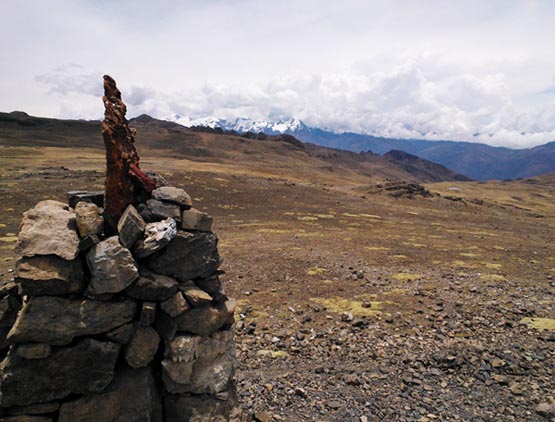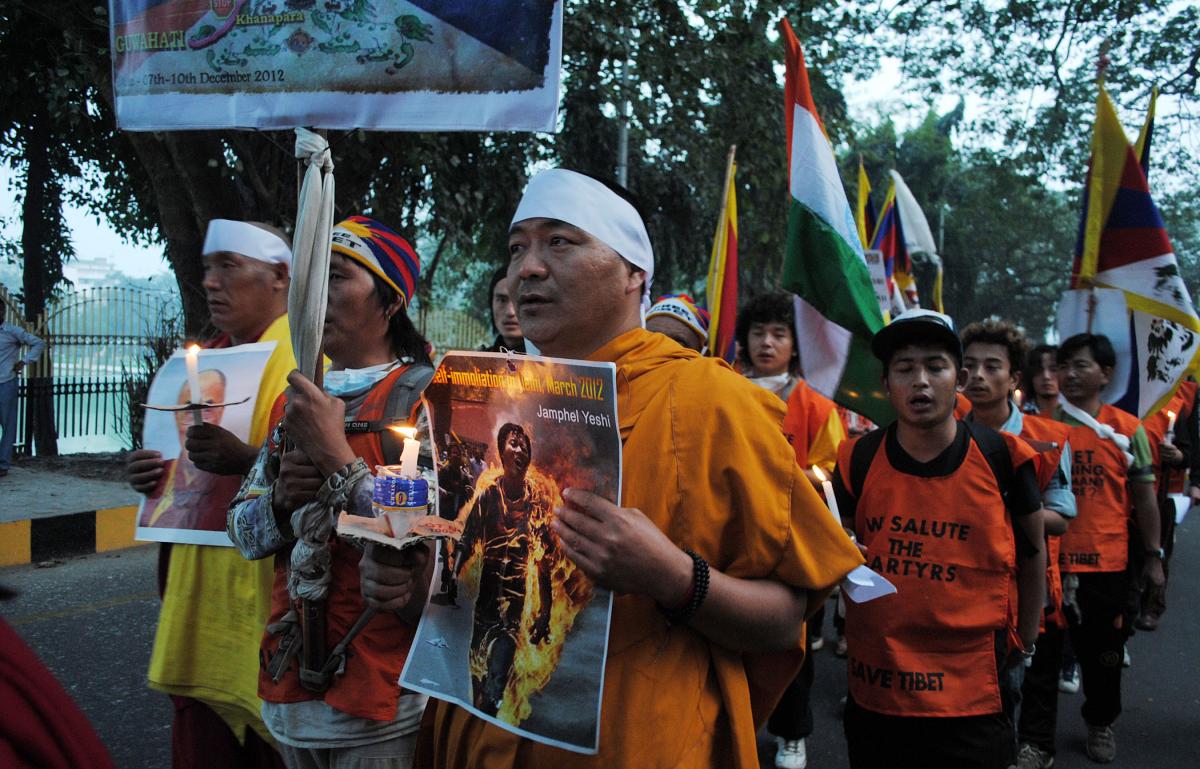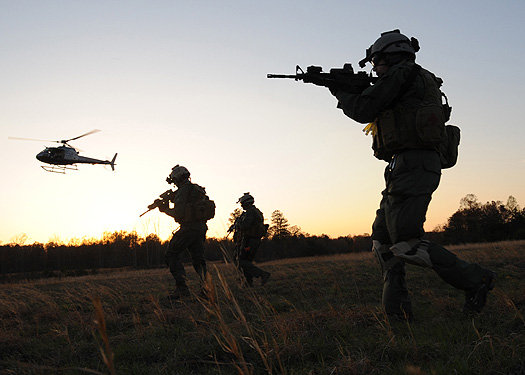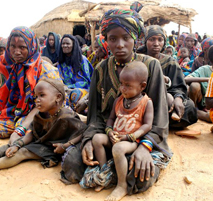Features
ENVIRONMENTAL DISSONANCE
Global Warming and Bolivia's Kallawaya Healers
by Dylan Harris, Upside Down World
LA PAZ — As the global climate change discourse heated up in Doha at the COP18, the lived reality of climate change was becoming more apparent in some of the world’s most vulnerable ecosystems. In Bolivia, a country unfortunately well acquainted with the effects of global warming, the COP discourse is more relevant now than ever.
Villages nested in the craggy peaks of the Cordillera Apolobamba of Northern Bolivia house the centuries-old Kallawaya healing tradition. A few weeks ago, I was conducting field research in the Apolobamba region of Northern Bolivia, walking from village to village and discussing agriculture and climate change with locals.
INDIA: TIBETANS MARCH FOR HUMAN RIGHTS

by Nava Thakuria, World War 4 Report
GUWAHATI — Tibetans across the globe celebrated the 64th World Human Rights Day on Dec. 10 with a new spirit. What was hailed as a Global Solidarity Day for Tibet was most widely observed by Tibetan exiles in India. Hundreds of Tibetans living in northeast India assembled in Guwahati, capital of Assam state, to raise their voices against the rampant violation of rights in Tibet by Chinese authorities. Cross-country marches by Tibetan protesters converged on the city from towns across northeast India, including Shillong, Tezu, Itanagar, Dimapur, Kohima and Tenzing Gang. They were unanimous in expressing profound grief that over 90 freedom-loving Tibetans have self-immolated over recent months.
IF YOU'RE READING THIS, THE WORLD HASN'T ENDED —YET
But give us another 100 years of climate change and we'll get there
by Michael I. Niman, ArtVoice
Recently, a friend in a small Mayan village where I once lived in southern Belize, invited me to attend the wedding of his daughter, who was marrying a boy from a neighboring village.
We've known the bride and her family since she was a small child, but regrettably we could not break away from our stateside commitments to attend. This was a traditional Maya wedding, joining Kekchi and Mopan Maya families from two different villages and Maya ethnicities together. And I'm sure it was a great celebration, with music, dancing, roast pork, chicken caldo, and all the trimmings of a grand Mayan feast.
The reason I bring this up is because people don't have festivals like this, making lifelong bonds and celebrating the future, a week before the world is supposed to end. The Maya that I know clearly were not expecting the world to end this week.
GUATEMALA'S 'LITTLE SCHOOL OF THE AMERICAS'
 by Dawn Paley, Upside Down World
by Dawn Paley, Upside Down World
COBÁN — Since February, forensic anthropologists have turned up over 400 skeletons at a military base in Cobán, Guatemala, in what has fast become one of the largest discoveries of a clandestine mass grave in the country. During the country's 36 year long internal armed conflict that led to acts of genocide, the base at Cobán was a center of military coordination and intelligence.
But what sets this dig apart is that it is taking place at a military base that remains active today: foreign military and police arrive regularly at the base to train troops from Guatemala, El Salvador, Nicaragua, Honduras, and the Dominican Republic. In 2006, the military zone in Cobán was renamed CREOMPAZ, which stands for Regional Training Command for Peacekeeping Operations.
ETHIOPIA'S ANUAK CONFRONT WORLD BANK OVER ETHNIC CLEANSING

by John Ahni Schertow, Intercontinental Cry
Indigenous peoples in southwest Ethiopia have implicated the World Bank in grave human rights abuses that are being carried out as part of a resettlement programme headed by the Ethiopian government.
The government is currently working to resettle approximately 1.5 million people across the country by 2013. "Villagization" is supposed to be a voluntary process that offers increased access to basic services and improved food security. However, according Anuak who reside in the Gambella region, nothing could be further from the truth.
HONDURAS: DRUG WAR AS COUNTERINSURGENCY?

by Bill Weinberg, High Times
Recent headlines from Honduras give an uneasy sense of deja vu for the bad old days of the 1980s, when the US and its local proxy forces waged brutal counter-insurgency wars across Central America.
Residents of Ahuas village, on the remote Miskito Coast, took to the streets May 11 to protest a deadly military-style drug raid, demanding the US DEA leave their territory—and putting government offices to the torch to make their point. Miskito Indian leaders issued a statement declaring the DEA persona non grata in the territory.
MILITARY INTERVENTION IN MALI
"Nothing But Their Eyes to Cry With"
by Stefan Simanowitz, Toward Freedom
This June, following a short but bloody battle, Islamic fighters ousted the Tuareg National Movement for the Liberation of Azawad (MNLA) from the city of Gao. After a hiatus of nearly five months, fighting has again erupted between the MNLA and fighters from the Movement for Unity and Jihad in West Africa (MUJWA). On Friday, amid conflicting reports, there was fighting near Mali's border with Niger and Burkina Faso and more skirmishes took place on Monday. The MNLA claimed to have launched an offensive aimed at regaining the Gao region while the MUJWA have said they have attacked the MNLA and have taken control of the town of Menaka. While the situation is currently unclear, even if MNLA forces suffered heavier losses, the fact that they have been engaged in fighting with Islamists has added a new dimension to the complex conflict in the northern Mali.
THE DESCENT OF THE COLOMBIAN ARMY
"Take No Prisoners" in Practice
by John Lindsay-Poland, Fellowship of Reconciliation
A new and long-awaited report on civilian killings by the Colombian military from 2002 to 2010 argues convincingly that the spike of state violence during those years grew directly from the policies of "Democratic Security" that attempted to militarize all Colombian society.
The study was produced by the Human Rights and Humanitarian Law Observatory of the Colombia-Europe-United States Coordination (known by its acronym in Spanish, CCEEU), a coalition of more than 200 Colombian human rights organizations and their counterparts in Europe and the US. Twenty of these organizations have come together to document, analyze and carry out judicial strategies on extrajudicial executions. The coalition has painstakingly compiled records of 3,512 reported extrajudicial killings from 2002 to 2010, during the presidency of Álvaro Uribe.















Recent Updates
1 day 11 hours ago
2 days 15 hours ago
2 days 15 hours ago
3 days 5 hours ago
3 days 5 hours ago
3 days 8 hours ago
3 days 8 hours ago
3 days 8 hours ago
6 days 7 hours ago
1 week 2 days ago